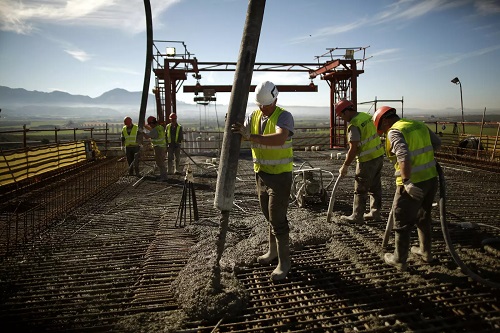 Tuesday, May 21, 2024
Tuesday, May 21, 2024  Tuesday, May 21, 2024
Tuesday, May 21, 2024 
Concrete is the most-consumed human-made resource on Earth, and the 14 billion cubic meters produced every year are projected to climb to 20 billion cubic meters by 2050, as human societies urbanize and demand for infrastructure grows. From bridges and hospitals to apartment blocks, offices and schools, concrete structures connect communities and shelter us as we work, study and sleep.
In the hands of skilful architects, concrete can create works of awe-inspiring beauty, such as Le Corbusier’s Chapelle Notre Dame du Haut, Mexico City’s Los Manantiales restaurant or Indonesia’s Merah Putih Bridge. For climate campaigners, however, concrete is one of the ugliest materials on the planet, because its manufacture is responsible for 7 percent of global carbon dioxide emissions.
So we urgently need to find ways to decarbonize the creation of cement — concrete’s key ingredient — if we are to limit global warming to 1.5 degrees Celsius. This article explores how investment in transformative, zero-carbon technologies can be ramped up, through global initiatives such as the World Economic Forum’s First Movers Coalition (FMC), which aims to harness the purchasing power of companies to decarbonize the “hardest-to-abate” industrial sectors responsible for a third of the world’s emissions.